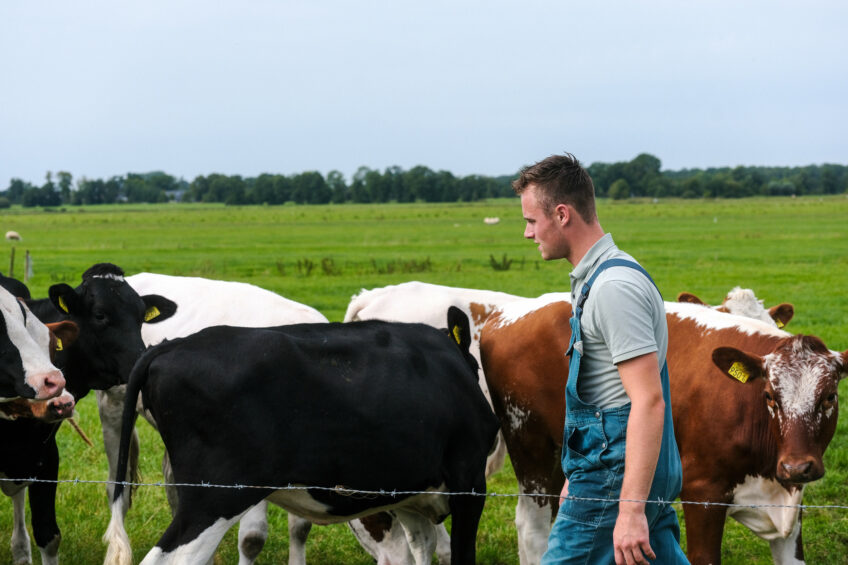Dairy incomes in England slump

Figures released by the UK government show a significant drop in farm business income for the dairy sector, which is matched for all the farm types in England for 2023/4.
The Farm Business Income Statistics, which shows business income by farm type for England and covers the 2023 harvest year, sets out average profits for different farm types. Analysis of each farm type is under 4 cost centres – agriculture, Basic Payment Scheme (BPS), agri-environment schemes (AAE) and diversification and assessment of the profit variability within each farm type.
Due to falling milk prices, the data shows farm business income for the dairy sector falling by 68% for 2023/4 to an average of £70,900 following 2 profitable years. Defra said it was important to note the wide variation in milk prices with some farmers receiving much more than others. Variable and fixed costs were also 3% and 11% higher.
The £70,900 was made up through:
- Agriculture – £34,700 on farming activities
- Average BPS – £17,700
- Average AAE – £8,200, which was 14% lower than for 2022/3
- Average diversified income – £10,400, down 25% due to lower output from food process and retailing and rental income.
However, dairy figures compare favourably to the average income for cereal farms (£39,400) and lowland grazing (£17,300). The data also shows that, on average, core farming activity actually made a loss for cereal farms, lowland grazing farms and upland grazing units.
Almost a quarter of farmers made a loss
Within the dairy sector, nearly a quarter of farmers (23%) made a loss across the business, while a further 12% made less than £25,000 a year. The figure is particularly concerning given that Basic Payment Scheme (BPS) made up 40% of profit, and its removal over the next 3 years will take another £20,000 out of the average business.
At the other end of the scale, some dairy farmers were making money with 30% making over £100,000 and a further 6% returning between £75,000 to 100,000.
Commenting on the statistics, the Country Land and Business Association (CLA) said business profitability was increasingly dependent on diversified activities, which have shown an increasing proportion across the main farm types, but there were notable decreases not just in the dairy sector, but also pigs, poultry and horticulture.
Given the phasing out of the BPS and introduction of Environmental Land Management schemes, there has been a rise in income from agri-environment across all farm types except horticulture. But the dairy average of £8,200 was lower than the average of 14% across all types to £10,600.
A ‘sobering reality’
The CLA said the overall figures presented sobering reading for policy makers: “The results indicate the increasingly risk operating environment and year-to-year volatility that many farming businesses face, as well as the increasing disparity between different sectors’ performance.
“The government is developing a long-term plan for the farming sector to be profitable and sustainable with national food security as a guiding light, and these figures, along with other information, provide insights on how best to help the sector meet that ambition.”
At a recent conference in London, environment secretary Steve Reed announced a 25-year farming roadmap for farming, designed to make agriculture more profitable and supply chains fairer.








